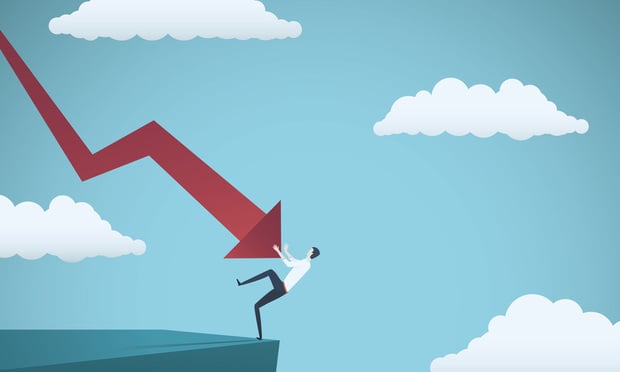The State of California and particularly Southern California will be hard hit by job loss in the downturn caused by the coronavirus pandemic. Los Angeles Mayor Eric Garcetti has already declared a state of fiscal emergency in response. In a webinar hosted by the Los Angeles Business Council this week, Nadine Watt, CEO of the Watt Cos., outlined the unemployment to come as well as the subsequent loss in tax revenue.
According to Watt, unemployment in California will hit its peak at 24.5% and lose $41 billion in tax revenue, compared to estimates from four months ago. During the Great Recession, unemployment peaked at 24.5%. "That is staggering," said Watt in the digital discussion. That unemployment rate will remain high through 2021, estimated to hover at or around 12%.
Southern California will bear the brunt of the job losses. "In Southern California, the industry impacts are dramatic," said Watt. "Southern California restaurants will take the hardest hit in 2020 and 2021 with a 53% to 63% drop in taxable sales." Clothing stores will falls 43% to 57%, auto sales will fall 38% to 48%, and home furnishing sales will sees a 34% to 43%.
Los Angeles County has launched a resiliency task force to track job loss. In the restaurant industry, 80% of workers have lost their job. While some of those jobs could come back, a significant number of restaurants will permanently close as a result of the pandemic. "A lot of those are not likely to come back. It is estimated that 30% to 40% of restaurants won't return," said Watt. "That is going to have a huge impact on retail going forward."
Already, workers have filed more than 1 million unemployment claims, and lower income jobs—people less likely to have a safety net—will be hit the hardest. "75% of job losses have average earnings of less than $50,000 per year," says Watt. "If economic activity begin next month, which we hope, it is expected that employment will be restored, but high unemployment rates are still expected through 2021."
In terms of commercial usage, Watt expects to see dramatic changes in the way that people use physical space. "I think that COVID-19 served as an accelerator of change, certainly for retail and for office," she said. "We will contemplate a recalibration of how we use space going forward."
Already, however, there have been positive changes. Long Beach, for example, is looking at ways to use outdoors space to support businesses while keeping people safe. "The are lights are the end of the tunnel," she said. "Cities like Long Beach are working on creating outdoor space and closing streets to have outdoor restaurants and creating open street initiatives that will facilitate social distancing."
Want to continue reading?
Become a Free ALM Digital Reader.
Once you are an ALM Digital Member, you’ll receive:
- Breaking commercial real estate news and analysis, on-site and via our newsletters and custom alerts
- Educational webcasts, white papers, and ebooks from industry thought leaders
- Critical coverage of the property casualty insurance and financial advisory markets on our other ALM sites, PropertyCasualty360 and ThinkAdvisor
Already have an account? Sign In Now
*May exclude premium content© 2024 ALM Global, LLC, All Rights Reserved. Request academic re-use from www.copyright.com. All other uses, submit a request to [email protected]. For more information visit Asset & Logo Licensing.








